February 26 -- Kaikoura,
On this the fifth day of the trip, and I made two forays out into the Pacific
from Kaikoura. The first was a Whale Watch that stretched from 7:45 in the
morning until about 10:30. We went out on one of Kaikoura Whale Watch's three
double hull, luxurious tour boats, and in the course of the morning got good
close looks at three sperm whales. The conditions were ideal. Although my
camera is not the best for the job, you can see that the whales were impressive.

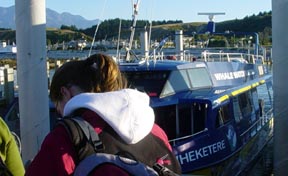 Before leaving
from the Kailoura Whale Watch Center, the sun was coming up over the South
Pacific. After about 50 people boarded the vessel, "Wheketere." we were
underway. Incidently, Wheketere is a Maori word, and in the Maori language, a
leading "Wh" is pronounced like an "F".
Before leaving
from the Kailoura Whale Watch Center, the sun was coming up over the South
Pacific. After about 50 people boarded the vessel, "Wheketere." we were
underway. Incidently, Wheketere is a Maori word, and in the Maori language, a
leading "Wh" is pronounced like an "F".
It didn't take long before the first Sperm Whale was spotted. The
coordinates were: 42o 30.222' S; 173o 37.048' E.
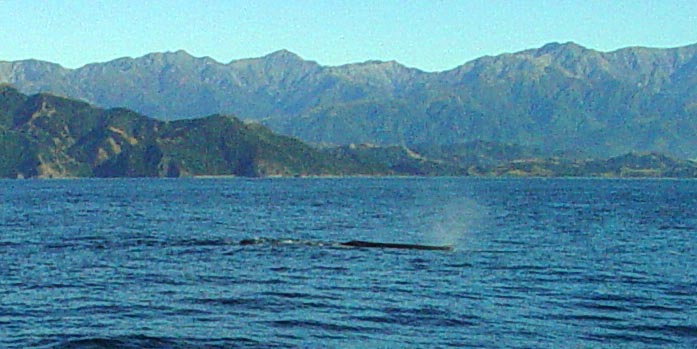
Notice how close this animal is to land. Only in New Zealand and the
Azores do deep canyons, favored by Sperm Whales for feeding approach this close
to shore. The water depth here exceeds 1000 meters. This is a large bull
whale, resident in the area, and well known to the Whale Watch people. He
spouted at about 20 second intervals for about 15 minutes after we arrived, and
then gently dove. Shortly another whale was spotted a mile or two away. This
was another bull, again one of the residents. He was spouting at shorter
intervals, and dove after a few minutes, showing his flukes as he went down.
The coordinates were: 42o 30.500' S; 173o 37.318' E.
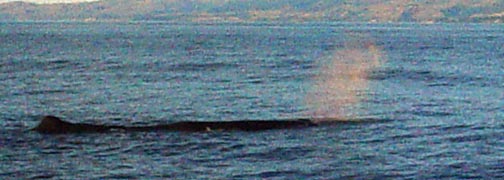
Approximately an hour after the first whale dove, he reappeared at the
surface, spouting frequently, and dove fairly soon. This was the last whale we
saw before departing, but it was a thrill to see the leviathan in the flesh!
The coordinates were: 42o 30.984' S; 173o 38.080' E)
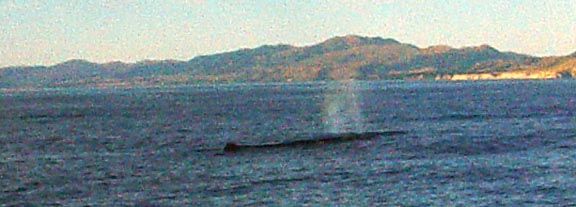
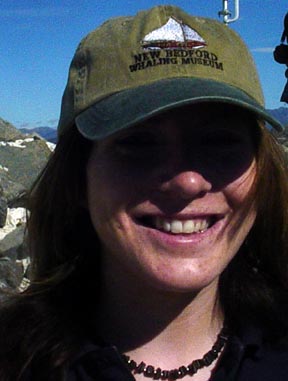 Back
at the dock we presented Jen, the "docent" on the trip, with a souvenir from the
New Bedford Whaling Museum. She was happy to have it!
Back
at the dock we presented Jen, the "docent" on the trip, with a souvenir from the
New Bedford Whaling Museum. She was happy to have it!
Later in the day I joined a fishing trip aboard the “Takapu” that moved off
the Kaikoura peninsula for a few miles, and spent 4 hours in the afternoon,
fishing for sea perch and blue cod. We caught a bunch of them, and also a few
other fishes—spiny dogfish, a scup, a couple of wrasses, and saw a wonderful 7
foot blue shark.
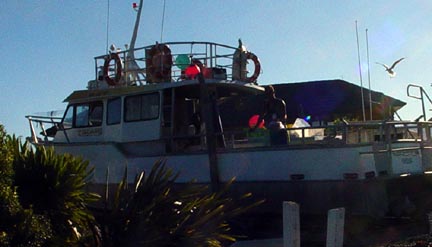
This is the "Takapu", an 11 meter aluminum vessel, resting on a trailer that
is hauled to the water and launched in a nifty fashion, with all hands aboard .
It is recovered at the end of the trip in an equally unique way.
Our quarry were ground fish, but on the way out, the captain pulled several
pots for the local crayfish (Spiny Lobster, Rock Lobster) which is a New Zealand
delicacy. Enough were caught to present each of the fishermen with one.
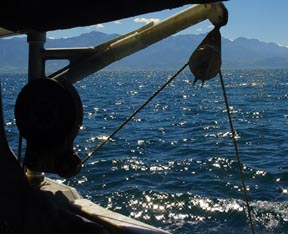
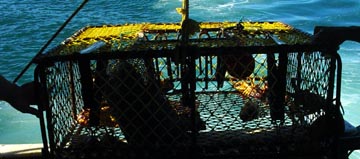
Moving a few miles out, to the edge of the continental shelf, we caught lots
of sea perch, blue cod, and even a couple of spiny dogfish:
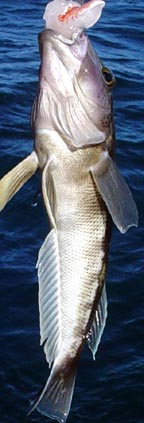
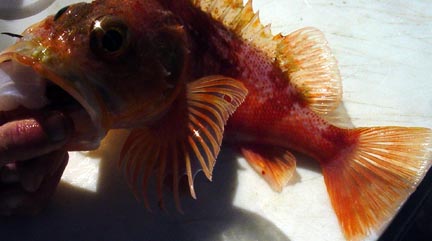
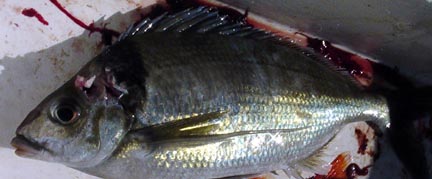
Most impressive, though, were the sea birds, many of which came right up to
the boat. These included Wandering Albatross, Shy Mollymawk (an albatross),
Northern Giant Petrels, Cape Pigeons, many other petrels and shearwaters, and
all the local gulls.

Here are three Shy Mollymawks, gathered around a Wandering Albatross.
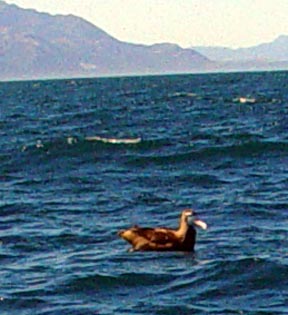
 This
is a Northern Giant Petrel. This species, and perhaps many of the petrels are
unusual in the bird world for having an apparently good sense of smell. Like
the vultures, they can locate the source of carrion very quickly
This
is a Northern Giant Petrel. This species, and perhaps many of the petrels are
unusual in the bird world for having an apparently good sense of smell. Like
the vultures, they can locate the source of carrion very quickly

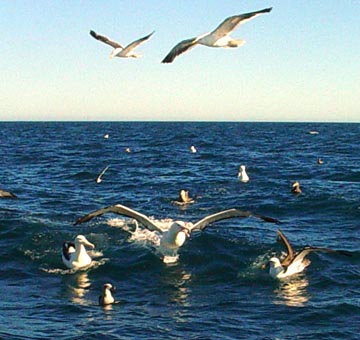
When bait was thrown to the birds, the intensity got pretty high. This
Wandering Albatross is not to be denied.
All in all, it was another wonderful day. The weather was perfect, the
company great, and the scenery magnificent. Lots of neat animals too!
Tomorrow morning I head across the South Island to the town of Westport.


 Before leaving
from the Kailoura Whale Watch Center, the sun was coming up over the South
Pacific. After about 50 people boarded the vessel, "Wheketere." we were
underway. Incidently, Wheketere is a Maori word, and in the Maori language, a
leading "Wh" is pronounced like an "F".
Before leaving
from the Kailoura Whale Watch Center, the sun was coming up over the South
Pacific. After about 50 people boarded the vessel, "Wheketere." we were
underway. Incidently, Wheketere is a Maori word, and in the Maori language, a
leading "Wh" is pronounced like an "F". 


 Back
at the dock we presented Jen, the "docent" on the trip, with a souvenir from the
New Bedford Whaling Museum. She was happy to have it!
Back
at the dock we presented Jen, the "docent" on the trip, with a souvenir from the
New Bedford Whaling Museum. She was happy to have it!







 This
is a Northern Giant Petrel. This species, and perhaps many of the petrels are
unusual in the bird world for having an apparently good sense of smell. Like
the vultures, they can locate the source of carrion very quickly
This
is a Northern Giant Petrel. This species, and perhaps many of the petrels are
unusual in the bird world for having an apparently good sense of smell. Like
the vultures, they can locate the source of carrion very quickly
